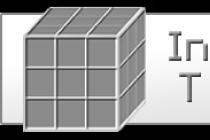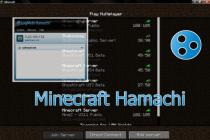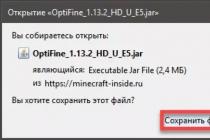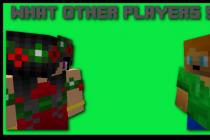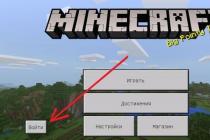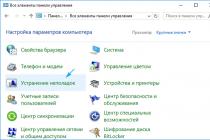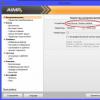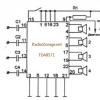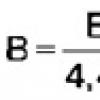In the Wikipedia online encyclopedia, a webinar is a type of web conference, holding online meetings or presentations over the Internet.
Let's explain it more simply: a webinar is an online training session or a corporate online meeting. Lecture on trends modern technologies, an origami master class or a briefing on new equipment for remote employees - all this can be done in the format of an online webinar.
There are always two parties involved in a webinar: the presenter and the audience. Usually the participants can see the leader, but he cannot see them. This is not surprising: if there are more than five listeners, it is difficult to see each participant. Therefore, to organize a webinar, you need a special platform: it is difficult to conduct a lesson for 100 people in a standard messenger with video calls.
How webinars and webinars work
Who is the webinar format for?
- For those who plan to conduct paid or free online courses. There are webinar platforms , which allow you to create beautiful branded landing pages for events with an effective registration form and accept payments for courses within the service.
- Companies that provide training for employees from different cities and countries and want to avoid complex logistics and business trips of entire departments.
- Those who often hold internal meetings with remote colleagues and want to find a convenient tool for corporate meetings.
If you need more information about what a webinar means for your business and what format options are right for you, leave a request on our
Regulations on the International webinar "Sunshine"
1. General Provisions
1.1. These Regulations determine the procedure for organizing and holding a Webinar on the International Portal "Sunshine" (hereinafter referred to as the Webinar) and the procedure for participating in the Webinar.
1.2. The organizer of the Webinar is the International Network Edition "Sunshine" (media registration certificate No. EL FS 77-65391).
1.3. The webinar is held in accordance with Part 2 of Art. 77 and paragraph 22 of Art. 34 Federal Law Russian Federation"On Education in the Russian Federation" No. 273-FZ of December 29, 2012 (as amended on December 31, 2014) and is aimed at supporting the exchange of experience between educators, the implementation of the requirements of the Federal State Educational Standards, the development of the creative potential of teachers and students and the formation a unified environment for educational workers.
1.3. The founder of the webinar forms the Organizing Committee (hereinafter referred to as the Organizing Committee), which further develops the webinar program (), interacts with lecturers, provides all the necessary material and technical base for the webinar, draws up documents confirming participation in the webinar, issues orders for the Webinar.
1.4. The Organizing Committee of the webinar provides information support for the Webinar.
1.5. The Organizing Committee provides organizational, technical and informational support for the Webinar
1.6. Goals and objectives of the Webinar:
Webinar Goals:
Assistance in the daily activities of education workers;
Support for the creative potential of teachers and students;
- formation of creative thinking, development of intellectual abilities of participants;
Webinar Objectives:
Creation of a unified environment for educators;
Activation of extracurricular and extracurricular activities;
Assistance in scientific and professional self-determination of participants;
Providing an opportunity to participate in the webinar of the International level;
Creation of conditions for support of gifted children;
Formation of an active life position;
Increasing the research and cognitive interest of teachers and students.
1.7. Both educators, parents of preschoolers, schoolchildren, students, as well as directly studying in educational organizations can take part in the webinar.
1.8. The working language of the Webinar is Russian.
1.9. Information about the webinar is posted on the information page on the Internet.
- Dates and organization of the webinar
2.1. Webinars are held every Tuesday and Thursday. A detailed schedule of past and future webinars can be found on the page
2.2. In order to create a barrier-free environment to ensure the full participation in the Webinar of all categories of students, including children with disabilities, orphans, children living in remote regions, and children from families in difficult life situations,
2.3. Participation in the webinar is free
2.4. The participant of the webinar has the opportunity to register for the webinar. At the same time, he will be sentsms Andemail notifications about the upcoming webinar, as well as a reminder before it starts. This does not oblige the participant to any further actions on the website of the International Portal "Sunshine"
- Organizing committee coordinates
Actual address: 660075, Krasnoyarsk, st. Maerchaka, 31A office 408
The development of modern educational space has led to the modernization of the technological and methodological components of the learning process. The legal documents emphasize the need and expediency of improving the methods of education and upbringing, including through the introduction of distance learning technologies. The wide distribution of the latter determined the development and formation of online didactics, the subject of which is e-learning. E-learning is the organization of educational activities using the content contained in the databases and used in the implementation educational programs information and providing its processing information technologies, technical means, as well as information and telecommunication networks that ensure the transmission of the specified information over communication lines, the interaction of students and teachers. The concept of "e-learning" is synonymous with the term "e-Learning". Currently, blended-learning is actively developing, assuming the optimal combination of full-time and distance forms of interaction between the teacher and students. Today, blended learning is most widespread in the environment of higher professional education.
Вlended-learning is implemented through web technologies that provide new ways and opportunities for communication between all participants in the educational process (wiki systems, websites, webinars), etc. Consequently, the form of organization of students' educational activities is also changing. Learning activity is a joint activity in which one of its participants gains experience (the main component), while others create favorable conditions for this, that is, they carry out the entire amount of the preparatory components of assimilation. The structure of learning activity includes two main components: learning activity and learning activity. For the organization of educational activities, certain methods and technologies are necessary. The introduction and active use of web technologies in educational practice has led to a change in the forms of organization of students' educational activities (see figure).
Currently, a webinar (online seminar) is one of the most common forms of organizing educational activities in e-learning. A webinar is an interactive training session organized via the Internet and a special software. At the same time, despite the remoteness of all participants in the educational process, they have the opportunity to see, hear each other, and interact.
It is customary to distinguish several types of webinars: informational (introductory lesson, overview lecture, virtual tour, etc.); teaching (problem lecture, workshop, lecture-demonstration, etc.); webinar training.
We will indicate the main didactic opportunities implemented through webinars in teaching students.
Providing feedback (interactivity). At the same time, the following types of interactivity are distinguished: one-to-many (teacher - students); one to one (student - student, student - content); many to many (student interaction). It should be noted that an organized virtual classroom changes the role of both the teacher and the students. Under the created conditions, the teacher is not a translator of knowledge, his activity reaches a new level and includes such components as organizing an independent active cognitive position of the student, consulting, assistance in designing, managing and implementing an individual educational trajectory.
Activation of educational and cognitive activity of students. According to I. G. Zakharova, it is the new educational technologies provide the following tasks:
Identification and use of incentives for the activation of educational and cognitive activity;
Deepening interdisciplinary connections in solving problems from various subject areas;
Active participation of the student in the design and further updating of his educational trajectory.
Visualization and multimedia support of educational material. The introduction of information and communication technologies in education, as rightly noted by A. I. Yakovlev, "significantly accelerates the transfer of knowledge and the accumulated technological and social experience of mankind not only from generation to generation, but also from one person to another."
In our opinion, the process of visualization of educational material deserves special attention. With the increase in information flows, the principle of cognitive visualization has become particularly relevant, according to which the efficiency of assimilation increases if visualization performs not only an illustrative, but also a cognitive function.
The visualization process is the folding of an information unit into a visual image that can be expanded. A visual image serves as a support for mental and practical actions. It was noted above that the passive perception of information does not ensure the full assimilation of the content of the educational material. In such a situation, the presented images should perform not only an informational (illustrative), but also a cognitive (cognitive) function. As P. Norton notes, almost any form of visual information contains elements of problematicness, the resolution of which is carried out on the basis of analysis, synthesis, generalization of data. At the same time, the higher the problematic nature of the visual message, the higher the intensity of the mental activity of students. To implement the principle of cognitive visualization, special methods for compressing educational material are being developed (logical-semantic models of condensation educational information: one-dimensional (linear) models, two-dimensional models, multidimensional models, Ishikawa diagrams, frame models, etc.). This makes it possible to largely concentrate the material in the form of a complex image and encode part of the information in the form of alphabetic characters. It should be noted that the visualization and coding of educational information contribute to a more intensive assimilation of the material, orients the student to the search for systemic connections and patterns.
The comprehension of the foregoing led to the consideration and identification of the features of the flow of such a cognitive process as thinking. This question is significant, as it allows to substantiate the conditions that ensure the state of intellectual comfort of students in the process of using web technologies.
A state of intellectual comfort can be achieved by creating a situation of success. The latter is a purposeful, organized combination of conditions under which the opportunity to achieve significant results in activities is realized. In psychological and pedagogical research, it is emphasized that success situations contribute to the development of cognitive interest, correct personal characteristics (anxiety, insecurity, self-esteem), maintain a favorable psychological climate, and significantly increase learning motivation. At the same time, we note that motivation is the leading factor regulating the activity, behavior, and activity of the individual. This provision is confirmed by the Yerkes-Dodson law, which illustrates the dependence of the result of activity on the strength of motivation. “No information offered to a student will be assimilated, accepted and transferred inside him if he does not have the appropriate motivation and personal significance of educational and cognitive activity” .
The closest in this aspect for us is the position of VV Serikov. The author notes that the inclusion of emotionally valuable, personal elements in the content contributes to the development of intersubjective communication between all participants in the educational process, creates a favorable emotional background, and increases the effectiveness of training.
Educational material is perceived on a personal level if it is experienced as a life problem. This, in turn, mobilizes and, accordingly, develops the structures of the intellect.
A close position was stated by I. N. Frolov. Exploring the influence of technical teaching aids on the process of perception of information and its comprehension, he comes to the conclusion that new educational technologies not only contribute to the intensification of the learning process, but also have a significant impact on the formation and assimilation of concepts and conclusions, the establishment of cause-and-effect relationships, etc. d.
The analysis of the above leads us to the understanding that knowledge and consideration of the perceptual modality of students is one of the necessary conditions for improving the learning process as a whole. At the same time, it should be noted that in practice, in order to avoid information overload, it is not recommended to use all perception channels simultaneously.
Creation of individual educational trajectories. A. V. Khutorskoy, A. B. Vorontsov emphasizes that an individual educational trajectory is a personal way of realizing personal potential; Yu. G. Yudin characterize it as a process and result of an individual choice by a student of the content, level and way of obtaining a professional in the implementation of pedagogical support for this choice.
The principle of individualization allows not only to take into account the characteristics and capabilities of each student, but also provides the right to choose. The researchers of this problem emphasize that the implementation of the subjective position is possible precisely by providing variability - the right to choose. In the works of T. V. Mashkova, two directions of choice are distinguished - horizontal and vertical. Horizontal - determines the choice of content, forms of organization of educational activities. The vertical direction provides the choice of the optimal level of education. S. I. Osipova, T. V. Solovieva indicate that choice is an action that gives purposefulness to all activities. In the concepts under consideration, the emphasis is on the independence of the subject, his personal position.
The foregoing allows us to conclude that the use of web technologies makes it possible to implement the following functions in the process of preparing students: informative and educational, organizational and stimulating, diagnostic and corrective, and communicative and managerial.
Informative and educational function is expressed in the operational "delivery" of information to teachers and students, in the possibility of automated work with data arrays. The organizational and stimulating function is aimed at coordinating the entire learning process, as well as the formation of individual educational trajectories. This allows not only to take into account the individual and personal characteristics of students, but also ensures the creation of a “success situation”. Associated with the above is the communicative and managerial function. It contributes to the implementation of various forms of interaction between subjects, providing feedback and managing the learning process. The diagnostic and corrective function integrates the resources described above and provides the possibility of automated diagnostics of students' knowledge, changes in the individual educational trajectory (tempo, complexity of tasks, level of preparation, etc.).
Thus, web technologies make it possible to put into practice a student-centered approach to organizing the learning process of students. The use of information and communication technologies contributes to the activation of the educational and cognitive activity of students through the implementation of operational feedback, the use of variable techniques and teaching methods, ensuring the intensification of the training process at the university.
This is due to the principle of adaptability, interactivity, individualization, visualization and multimedia.
The word "webinar" is derived from the English words "web-based seminar" (abbr. webinar) and is used to define various events (seminars, discussions, conferences, presentations and even trainings) taking place on-line. The webinar is conducted via the Internet in real time in virtual classroom. The presenter uses video broadcasting, voice communication and pre-prepared presentation slides, tables, tasks, etc. At the same time, webinar participants can communicate with the host and among themselves in a chat. The duration of the webinar usually does not exceed one and a half hours.
Webinars, as a distance learning form, have long been widely used by internal training centers of commercial companies with a developed regional network. This is explained by the fact that it is webinars that can significantly reduce costs and save time on staff training. In addition, important advantages include: the possibility of conducting training simultaneously for a large number of students; providing knowledge with active interaction between the facilitator and listeners; assessment of acquired knowledge immediately after the event.
However, webinars also have certain disadvantages, in particular, the difficulty in shaping listeners' skills and abilities in practical activities, the lack of direct contact between the presenter and the listener.
It should be noted that conducting webinars requires a certain skill from the teacher, which is explained by the lack of direct contact with the participants. For the teacher, this means that the voice and demonstration material are the main means of influencing the audience. As for the educational material of the webinar, its distribution is not much different from traditional lectures or seminars, namely:
- setting goals and objectives of the lesson;
- presentation of the main part;
- solving practical problems, cases, discussing acute issues;
- quality control of assimilation of the material (survey, testing, etc.);
- summarizing. Usually, educational material is presented in the form of a PPT presentation.
Therefore, in order to constantly maintain the attention of the audience, the presentation should be as informative and interesting as possible. The optimal time for commenting on one slide is about five minutes. In addition, every 3-5 slides, you need to include those that contain problematic questions, allowing you to get feedback from listeners.
Thus, the didactic value of a webinar largely depends on the professional training of the teacher and his pedagogical skills, as well as on the ability of students to quickly process educational material, clearly and concisely express their thoughts, and ask questions.
So, webinars are an effective form of distance learning, providing two-way communication between the presenter and participants in real time, which have taken their rightful place among the forms of distance learning.
Trainings, master classes, conferences and field seminars, business games and case solving - there are a great many formats of training events now. How not to miscalculate and choose the right method for obtaining new knowledge that is right for you?
Trainings, master classes, conferences and field seminars, business games and case solving - there are a great many formats of training events now. How not to miscalculate and choose the right method for obtaining new knowledge that is right for you? We present you a guide to training in the format of webinars.
Webinar is a form of distance learning, an online event on the Internet, in which from one to several thousand people can take part.
Advantages of webinars as a form of knowledge acquisition
- Convenience. This method of learning is distinguished by the comfort of the process - you can receive important information for you without leaving your home - you do not need to get to the master class, spend extra money and time on it. You can avoid expenses and develop your skills from almost anywhere in the world - the main thing is to have a computer and the Internet at hand.
- The ability to keep up with the group when skipping classes. After passing, each participant will be sent a recording of the webinar, which can be listened to individually. Unlike conventional training, this gives you a chance to easily fill in the gap and continue your course of study - if you missed one session from a series of webinars.
- Concentration on the subject of study. During the online training, you can not be distracted by making notes - specialists take notes for you technical support and then promptly send it to you by mail. An option for those who do not have enough time to watch: make an audio version of the webinar and upload it to the player to listen to better memorization of the material.
- Information from the best experts. Training agencies do not always have the opportunity to bring experts from other cities and countries to conduct a master class. Thanks to the technologies of the 21st century, this is now available - trainers can conduct training during an online conference. And as a result, you get relevant advice from the best experts in their field.
- Immediate feedback. It is not always possible to ask questions in a regular training. The webinar gives you a chance to address your questions to the trainer both in writing and orally - the probability of getting "feedback" immediately is much greater.
- Low cost compared to conventional training. The price range of the cost of participation in one webinar of the Master Class training agency usually does not exceed 1000 rubles. This is much lower than the cost of a traditional seminar. Due to the simplicity of conducting and connecting, webinars are an excellent option for combining price and quality.
What technical points should be considered when participating in a webinar?
As practice shows, the possibility of participation depends primarily on a stable Internet. The higher the speed of your Internet, the higher the likelihood that everything will go smoothly.
From the equipment you will need speakers, headphones or a built-in speaker - in order to hear the teacher's voice. The webinar organizers will send you a link and password to access the site. If you are going to be the webinar speaker, you will also need a microphone or headset; webcam - so that you can be seen by other webinar participants.
As a rule, companies organizing a webinar try to provide technical support. Specially trained specialists will tell you what to do if the connection is interrupted, the video does not show or the sound lags behind.
To register, you only need to provide your email address. It is entered into the database, according to which the participant automatically receives a reminder about the webinar and a link with a password to enter the portal automatically 1 day in advance. Payment is made according to the invoice sent to the branch of Sberbank.
What else distinguishes webinars from standard forms of training? At the master classes, the trainer gives group exercises, where you will still work out the information received. Webinars indicate the direction of movement, but it is up to you to move in this direction or not. You will apply new knowledge in practice on your own. This form of training is preferable for independent, disciplined and purposeful people who firmly understand why they need this training. If you are one of those people, webinars will be the most productive way for you to upgrade your skills and get new information.
You can see the detailed schedule of webinars from the Master Class training agency by clicking on.

